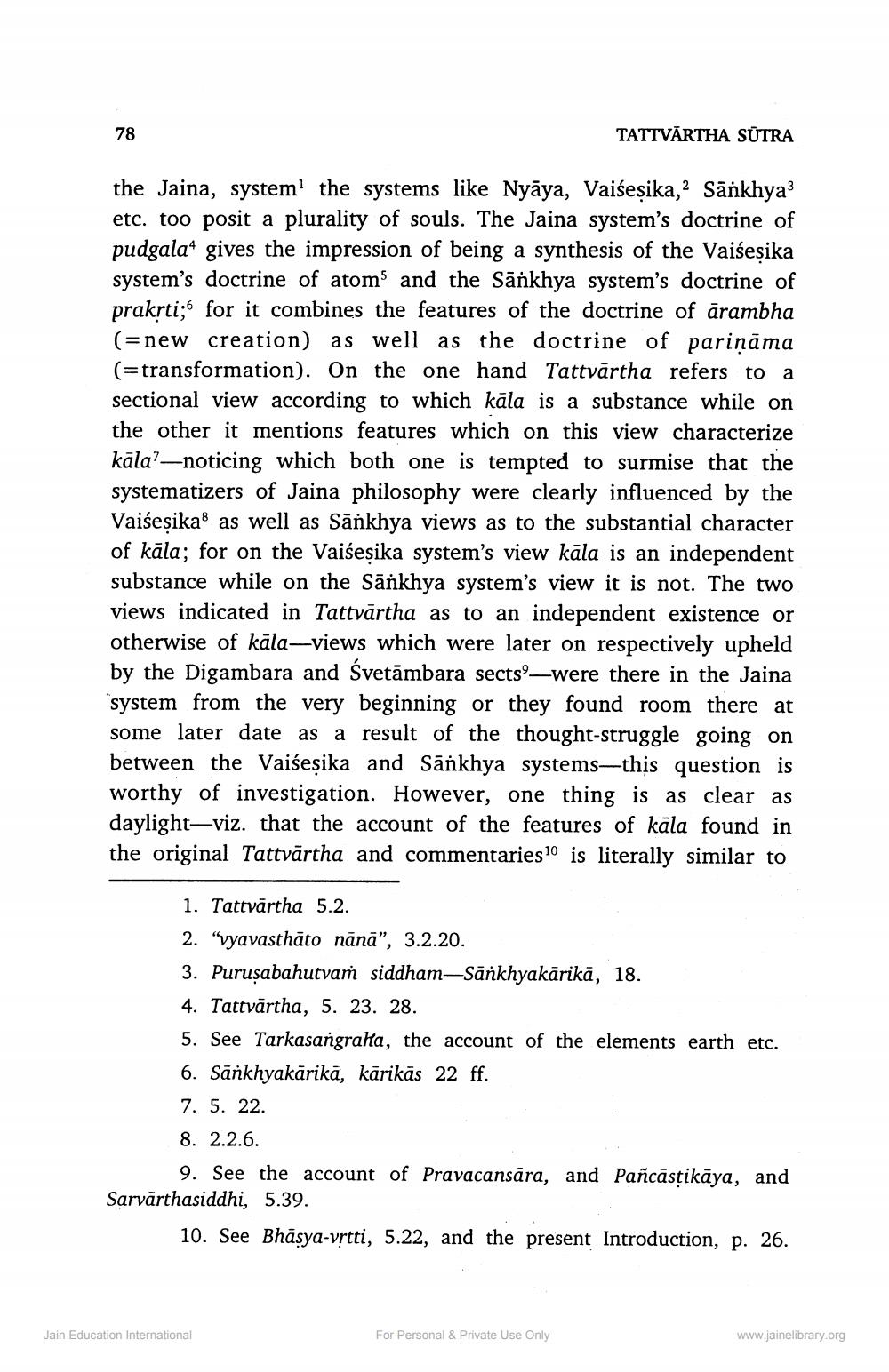________________
TATTVĀRTHA SŪTRA
the Jaina, system the systems like Nyāya, Vaiseșika, 2 Sānkhya? etc. too posit a plurality of souls. The Jaina system's doctrine of pudgala“ gives the impression of being a synthesis of the Vaiseșika system's doctrine of atoms and the Sānkhya system's doctrine of prakrti;“ for it combines the features of the doctrine of ārambha (=new creation) as well as the doctrine of parināma (=transformation). On the one hand Tattvārtha refers to a sectional view according to which kāla is a substance while on the other it mentions features which on this view characterize kāla?-noticing which both one is tempted to surmise that the systematizers of Jaina philosophy were clearly influenced by the Vaiseșika as well as Sānkhya views as to the substantial character of kāla; for on the Vaiseșika system's view kāla is an independent substance while on the Sānkhya system's view it is not. The two views indicated in Tattvārtha as to an independent existence or otherwise of kāla—views which were later on respectively upheld by the Digambara and Śvetāmbara sects—were there in the Jaina "system from the very beginning or they found room there at some later date as a result of the thought-struggle going on between the Vaiseșika and Sankhya systems—this question is worthy of investigation. However, one thing is as clear as daylight—viz. that the account of the features of kāla found in the original Tattvārtha and commentaries10 is literally similar to
1. Tattvārtha 5.2. 2. "vyavasthāto nānā”, 3.2.20. 3. Purusabahutvaṁ siddham Sankhyakārikā, 18. 4. Tattvārtha, 5. 23. 28. 5. See Tarkasangraha, the account of the elements earth etc. 6. Sankhyakārikā, kārikās 22 ff. 7. 5. 22. 8. 2.2.6.
9. See the account of Pravacansāra, and Pañcāsţikāya, and Sarvārthasiddhi, 5.39.
10. See Bhāsya-vrtti, 5.22, and the present Introduction, p. 26.
Jain Education International
For Personal & Private Use Only
www.jainelibrary.org




